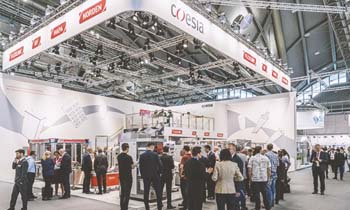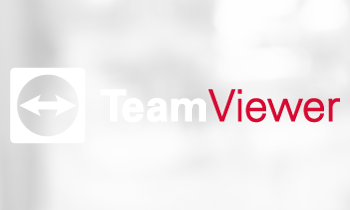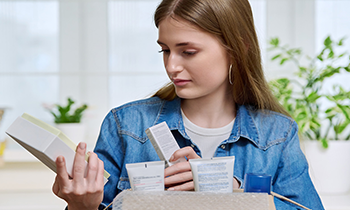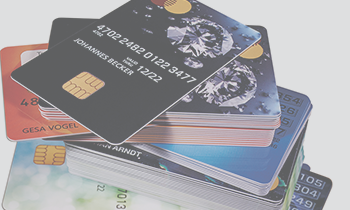Unboxing the success formula for future luxury packaging
Why digital inline printing is decisive wherever individuality, sustainability, and immediate customer satisfaction are in demand.
When we look at something that particularly strikes us, our pupils dilate involuntarily, so that the object of our desire appears in a brighter light. Luxury is about this glow. Over the years, the concept of luxury has evolved dynamically, mirroring a changing society. In the past, luxury was based on privileged status, high price, and inaccessibility; contemporary luxury is based on craftsmanship, excellent brand reputation, and high quality, giving goods intrinsic value.
Therefore, growth prospects remain good: The global luxury market, whose driving forces are primarily the USA and China, was at $309.6 billion in 2021 and is currently expected to reach $382.6 billion by 2025, which reflects 5.4 percent year-to-year growth. But those who wish to participate in this market growth face three challenges:
- "New Luxury" is a movement with its own community: a global mix of young consumers between the ages of 16 and 34, consisting of early adopters and fashion-conscious individuals. New luxury consumers seek individuality and customization. They do not simply buy a product – they carefully choose a brand because it reflects their lifestyle and values.
- Sustainability is another striking trend in this industry: the rising demand for green products and sustainable practices is pushing luxury brands to continually change their production processes and material preferences. Sustainability must cover 100 percent of product life, from production to delivery, including packaging materials. Bain & Company, a consultancy whose annual luxury study has analyzed market trends and developments for more than 20 years, even issued a challenge to the industry’s companies in its last update: „Out-innovate on sustainability to build a competitive advantage.“
- Covid-19 has boosted growth of online sales and boosted the digitalization of the entire luxury shopping journey. Boutiques are either going online or, often, becoming customer-tailored spaces. One obstacle e-commerce faces is delivery: consumers expect the same immediate satisfaction for their cravings as in brick-and-mortar sales – which puts pressure on the luxury supply and delivery chain.
To sum up, this means that the future success of a luxury market depends largely on how much the brand owner can adapt his business to the desires of his customers with respect to individuality, customization, sustainability, and immediate satisfaction.
Packaging is always a special focus here. For one thing, it provides an opportunity to comprehensively shape the customer and brand experience. And that is important because, in the context of luxury products, packaging is a powerful tool for amplifying experiences and brand values, which is essential to making them tangible. Packaging is integrated into the product offer and conveys the sense of luxury consumers are looking for. For another, packaging must be able to fulfill the customer desires and ideas listed above – otherwise disappointment is inevitable.
Conventional packaging processes quickly reach their limits here. They are often designed for large quantities. But if the number of SKUs rises so that at least various target groups can be addressed in a differentiated manner or so that various eventualities in demand can be reacted to quickly, the costs for storing all these SKUs automatically rise as well. Then there are often hidden costs that arise when the packing line must be converted frequently, leading to downtimes. And sustainability suffers when a large part of the packaging produced ultimately goes unused and winds up as waste.
But digital inline and on-demand printing technology opens up completely new options for luxury goods. The magic triangle of customization, sustainability, and immediate satisfaction can be achieved without the necessity of compromise. To answer the growing demand for personalization and the consequent SKU proliferation while keeping an eye on sustainability and volatile demand, Atlantic Zeiser offers modular printing technologies for inline late-stage customization, making it possible to generate any number of SKUs without stock or set-up time. “Brand owners just need to integrate our inline printing equipment into their packaging process … and they’re there!”, says Eric Penne, Sales Director at Atlantic Zeiser. “This guarantees personalization and differentiation on the shelf or in online shops while reducing waste in the form of unused labels or boxes.”
One example is DIGILINE Versa Pro, a system for digital inline or nearline color printing for flat folding cartons. The system was developed specifically to complement existing conventional packaging lines so that they could capitalize on the advantages of digital technology. Brand owners even of luxury goods can thus retain their familiar processes and still have part of the packaged products personalized or individualized for such purposes as marketing campaigns, seasonal promotions, and target group-specific information. Eric Penne concludes: “The high print quality – even in color – and the flexibility and excellent price-performance ratio of drop-on-demand inkjet technology means that its advantages can be enjoyed in an increasing number of applications.”







